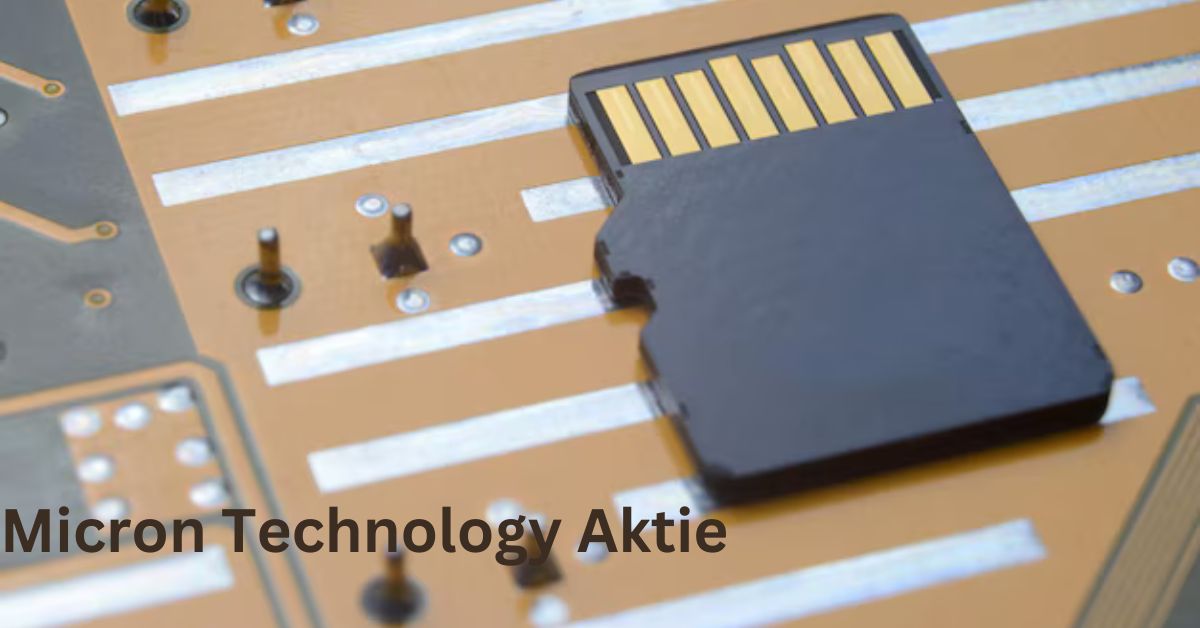Micron Technology, Inc., one of the largest semiconductor companies globally, has become a focal point for investors. With its key role in producing memory and storage solutions, Micron’s stock (referred to as “Micron Technology Aktie” in German) is closely watched by traders, analysts, and tech enthusiasts alike. This article provides a deep dive into Micron Technology’s stock performance, the factors influencing its growth, and its potential future trajectory.
Overview of Micron Technology
Micron Technology was founded in 1978 and has since evolved into a global leader in the semiconductor industry. The company primarily focuses on producing memory chips, including dynamic random-access memory (DRAM) and NAND flash memory, which are integral components in many modern devices such as smartphones, computers, and data centers. Micron’s innovations in memory technology have positioned it as a critical player in several industries, including consumer electronics, cloud computing, artificial intelligence, and autonomous vehicles.
Micron’s leadership in cutting-edge technology and its vast product portfolio have helped it maintain a strong foothold in a competitive market. However, like other tech companies, its stock is subject to various market forces, including demand fluctuations, technological advancements, and geopolitical issues. This volatility makes Micron Technology Aktie an interesting, albeit complex, investment.
Stock Performance and Trends
Micron Technology’s stock has historically experienced significant fluctuations. These variations can largely be attributed to the cyclical nature of the semiconductor industry. Memory chip demand tends to ebb and flow with the larger tech sector, particularly in industries like personal computing, data centers, and automotive technologies.
The stock has witnessed a series of ups and downs, especially in response to global semiconductor shortages and trade tensions between the U.S. and China. However, despite this volatility, Micron has demonstrated strong long-term growth, largely due to its leadership in DRAM and NAND technology.
In recent years, Micron’s stock surged following the increased demand for memory chips due to the growth in cloud computing, 5G networks, and AI-driven applications. During periods of high demand, Micron’s stock tends to perform well. However, when there’s an oversupply of memory chips in the market, the stock can face downward pressure as prices for these components decline.
Impact of Global Semiconductor Trends
The global semiconductor market significantly impacts Micron Technology’s stock price. The semiconductor shortage, which began in 2020, created a ripple effect across the entire tech industry. Micron, being one of the largest memory chip manufacturers, benefited from the supply constraints as prices of memory components surged due to high demand and limited supply.
This shortage was initially triggered by the COVID-19 pandemic, which disrupted supply chains and increased the demand for electronic devices, cloud services, and network infrastructure. As manufacturers struggled to keep up with the rising demand, companies like Micron experienced a boost in their stock prices.
However, this situation also brought challenges. The geopolitical tensions between the U.S. and China, particularly surrounding trade and technology, impacted Micron’s supply chain and international relations. Restrictions on exporting technology to China, which is a major consumer of memory chips, introduced some uncertainty to the company’s future revenue streams.
Key Factors Influencing Micron’s Growth
Technological Innovation
Micron’s commitment to innovation is a key driver of its long-term success. The company consistently invests in research and development to improve the efficiency and performance of its memory products. Recent breakthroughs in DRAM and NAND technologies have helped the company stay ahead of competitors and meet the growing demand for high-performance memory solutions.Micron’s latest advancements in memory chips, such as high-bandwidth DRAM for AI applications and power-efficient NAND for mobile devices, have set it apart in the industry. As AI, machine learning, and edge computing become more widespread, Micron’s products are increasingly vital to next-generation computing needs.
Expanding Market Segments
In addition to its core markets in personal computing and consumer electronics, Micron has expanded its reach into new, high-growth areas. The company has made significant inroads into the automotive sector, providing memory solutions for autonomous vehicles and electric cars. Similarly, the growth of the Internet of Things (IoT) and 5G infrastructure has opened up new opportunities for Micron to supply memory components for connected devices and telecommunications equipment.
Global Demand for Data Centers
The explosion of data generated by businesses, consumers, and devices has fueled the demand for data centers and cloud computing services. Micron’s memory solutions are critical to supporting these data centers, which require vast amounts of storage and processing power. As more companies adopt cloud solutions and edge computing becomes more prevalent, Micron stands to benefit from the sustained demand for high-performance memory products.
Supply Chain and Geopolitical Factors
Supply chain management remains a critical aspect of Micron’s operations. Given the global nature of the semiconductor industry, disruptions in the supply chain can have significant consequences for the company. Geopolitical factors, including trade policies and government regulations, can also affect Micron’s ability to maintain smooth operations. Tensions between the U.S. and China, along with sanctions or trade restrictions, have the potential to disrupt Micron’s access to key markets and components.
Challenges and Risks
Although Micron Technology has many growth drivers, the company is not without its challenges. As a cyclical industry, the semiconductor market is prone to periods of oversupply, leading to price declines. When memory prices fall, Micron’s revenue and profitability can take a hit, resulting in a decline in its stock value. Additionally, competition from other major players such as Samsung and SK Hynix adds pressure to innovate and stay competitive.
Another significant risk is the geopolitical landscape. Any escalation in trade tensions between the U.S. and China could lead to restrictions on exports or increased tariffs, impacting Micron’s bottom line. Furthermore, changes in government policies, particularly around technology and intellectual property, could have a long-term impact on the company’s ability to operate globally.
Lastly, technological obsolescence is a persistent risk in the tech industry. Micron must continually innovate to keep pace with rapidly evolving technology and changing consumer needs. A failure to do so could result in losing market share to more agile competitors.
Future Outlook for Micron Technology Aktie
Despite the challenges, the future looks promising for Micron Technology. The company is well-positioned to capitalize on several emerging trends, including the growth of AI, cloud computing, and 5G technology. As industries continue to digitize and generate massive amounts of data, the demand for advanced memory and storage solutions will only increase, giving Micron a significant opportunity for growth.
Furthermore, Micron’s ongoing investments in research and development will help the company maintain its leadership in memory technologies, ensuring it remains competitive in a rapidly changing market. By diversifying its product offerings and expanding into new markets, Micron is likely to see continued demand for its products in the coming years.
In terms of stock performance, while the semiconductor market may experience some short-term volatility, the long-term outlook for Micron Technology Aktie remains positive. Investors looking for exposure to the rapidly growing tech sector, particularly in memory and storage, may find Micron a compelling investment opportunity.
Conclusion
Micron Technology Aktie represents both opportunity and risk. As a leader in memory and storage solutions, Micron is poised to benefit from the growth of data-driven industries and new technologies like AI, autonomous vehicles, and 5G. However, the company must navigate the challenges of a cyclical market, intense competition, and geopolitical uncertainties.
With its solid track record of innovation and its ability to adapt to market trends, Micron remains a strong contender in the semiconductor space. For investors seeking long-term growth, keeping an eye on Micron’s developments and broader industry trends is essential.










